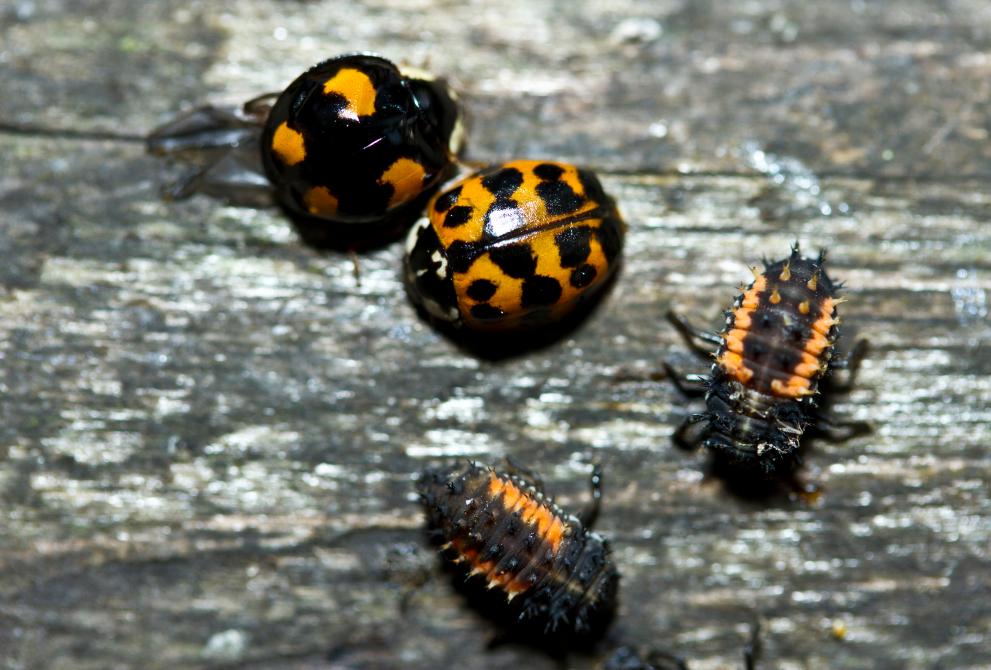
This study explored the costs associated with such species, using the InvaCost database, to quantify the level of damage and of mitigation measures. The researchers report that between 1960 and 2020 invasive alien species caused over US$1 130.6 billion (€1 trillion) in damage worldwide, with management expenditure ten times lower, and preventative management representing a small fraction of this outlay.
Invasive alien species – plants, animals and other forms of life that establish themselves outside their natural range with negative effects – are a key cause of biodiversity loss and can cause extensive economic damage. The Convention on Biological Diversity and the UN Sustainable Development Goals both highlight the importance of addressing this threat, which is expected to increase in significance in coming decades. Previous studies have indicated that pre-emptive and rapid reactive measures are the most effective, but investment in these actions is typically low relative to damage costs.
This study used the InvaCost database, a freely available global dataset of costs associated with invasive alien species – developed in collaboration with the AlienScenarios project and funded by the EU BiodivERsA programme1. The data it contains were initially gathered through extensive online research and are regularly updated. It includes explicit information on the nature of expenditures, placing management actions into four categories:
- Pre-invasion management: preventative actions to limit the introduction of non-native species, such as risk assessments and border checks.
- Post-invasion management: actions to manage species that have already been introduced, such as eradication and control measures.
- Knowledge funding: actions that apply before and after introduction, such as research and communication.
- Mixed: applying to more than one of the above management categories.
The researchers used a filtered version of the database, excluding entries with missing or uncertain data, to assess costs incurred globally between 1960 and 2020. They report that over this period the total cost of damages from invasive alien species was US$1 131 billion (€1 055.82 billion) (based on the 2017 US dollar value). Over the same period, total management spending amounted to $95.3 billion (€88.96 billion), of which $72.7 billion (€67.87 billion) was used for post-invasion management, $15.6 billion (€14.94 billion for knowledge funding, $2.8 billion (€2.61 billion) for pre-invasion management and $4.2 billion (€3.73 billion) spent on a mixture of management types.
The majority of the expenditure (69%) focused on terrestrial species ($66.1 billion (€61.6 billion)) with $6.7 billion (€6.26 billion) on semi-aquatic and $2 billion (€1.87 billion) on aquatic species. A large proportion of expenditure (42%) could not be specified by taxonomic group; however, of the remainder, the majority was spent on invertebrates (58%) with 27% spent on plants and 12% on vertebrates.
The researchers highlight that the expenditure on management action for invasive alien species is ten times lower than the cost of the damage they cause, and that the expenditure on preventative action is 25 times lower than on reactive measures. They argue for the potential cost effectiveness of pre-emptive and early-stage interventions, citing the case of a rapid response to a fire ant invasion in New Zealand that cost NZ$1.4 million (€0.85 million), while the potential damage from an established population was estimated at NZ$318 million (€192.08 million) per year. Overall, they estimate that every $1 (€.93) of global pre-invasion spending saved $53.50 (€49.78) in potential long-term damages.
The researchers report that, across the whole dataset, the average time lag between the first record of damage from a given species in a given location and the first record of a management action response was 10.7 years. They posit that this delay has cost over US$1 trillion globally in avoidable impacts relative to a scenario with immediate management. In future, they say, proactive management spending should be prioritised to prevent biological invasions and their massive impacts.
The researchers acknowledge that the information in the database is not comprehensive and costs are, therefore, conservative, and, that while it represents the best data currently available at this scale, it is limited by gaps and ambiguities. They recommend that a standardised framework be developed for recording information on management actions and costs, and that efforts are made to promote cross-sectoral collection of such data. They also suggest that information on the success and failure of specific actions in specific contexts be recorded and collated in a common repository for management actions to inform and guide future management decisions.
Further Information
For more reading on this subject: Huabrock, P.J; Turbelin, J., Cuthbert, R.N. et al. (2021) Economic costs of invasive alien species across Europe. Neobiota 67: 153–190.
Footnotes:
- Funding was also provided by AXA Research Fund Chair of Invasion Biology and the French National Research Agency (Invasive insects and their costs for biodiversity, economy and human health | ANR).
Source:
Cuthbert, R. N., Diagne, C., Hudgins, E. J., Turbelin, A., Ahmed, D. A., Albert, C., Bodey, T. W., Briski, E., Essl, F., Haubrock, P. J., Gozlan, R. E., Kirichenko, N., Kourantidou, M., Kramer, A. M., and Courchamp F. (2022) Biological invasion costs reveal insufficient proactive management worldwide. Science of The Total Environment 819: 153404. Available from: https://doi.org/10.1016/j.scitotenv.2022.153404
To cite this article/service:
“Science for Environment Policy”: European Commission DG Environment News Alert Service, edited by the Science Communication Unit, The University of the West of England, Bristol.
Notes on content:
The contents and views included in Science for Environment Policy are based on independent, peer reviewed research and do not necessarily reflect the position of the European Commission. Please note that this article is a summary of only one study. Other studies may come to other conclusions.
Details
- Publication date
- 5 October 2022
- Author
- Directorate-General for Environment

